With climatic and soil conditions suitable for the growth of mushrooms of various kinds, especially pharmaceutical mushrooms, the growing of red linhzhi mushroom in Dong Hoa commune (Trang Bom District, Dong Thap Province) follows an enclosed production chain of various steps, from breeding to culture and processing.
Visiting a red linhzhi (a pharmaceutical mushroom species) farm of Tran Hong Thuy, who boldly invested more than 400 million dong in 2013, we can understand that red linhzhi growing does not take great effort provided the growers strictly comply with the technical process of various steps from gourd cutting, to strain steaming, planting, warming and different tending techniques.
Mushroom farms must also be absolutely clean and airy, ensuring a temperature of 22 – 28 oC and humidity of 80-90%.The mushroom growing houses must be equipped with automatic watering systems, cement floors to maintain humidity for mushroom development and surrounding nets to prevent insects from causing damage to the mushrooms.
With his initial success at three farms, Tran Hong Thuy invested in two more red linhzhi farms. Monthly, he harvests from these farms more than 100kg of mushroom. With a price of between 800,000 VND and 1,000,000VND/kg, he earns about 1 billion dong/ year. Unsold red linhzhi mushroom can be fire- dried and preserved for use after 3 to 5 years.
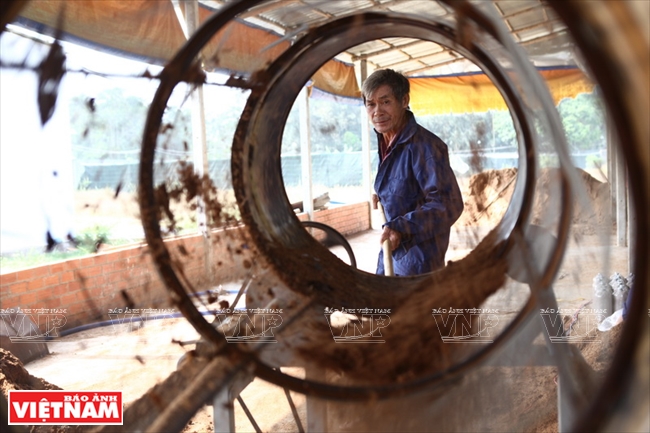
Preparation of soil for linhzhi growing...
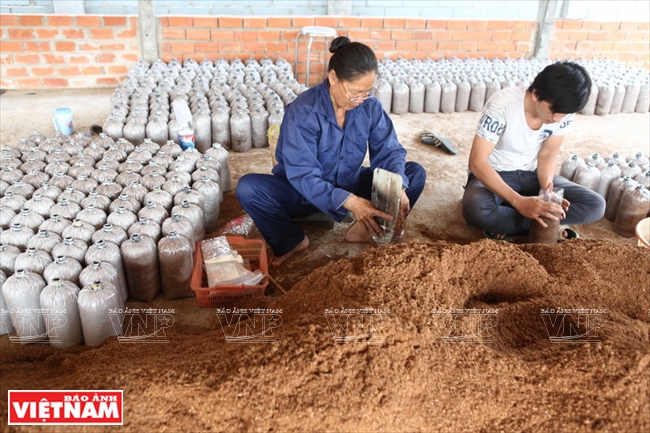
... and preparation of growing gourds for planting of mushroom embryos.
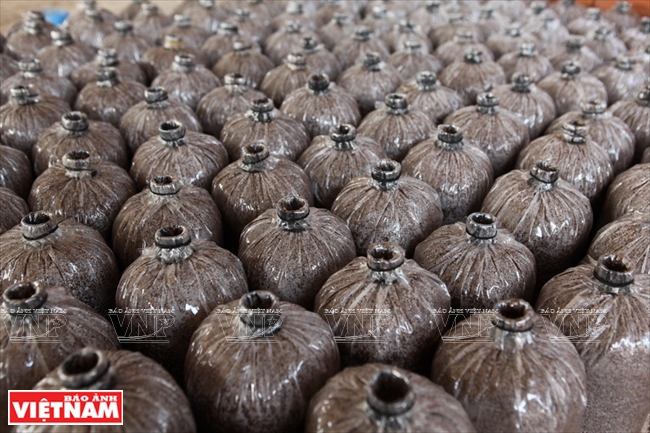
Mushroom embryo planting gourds at mushroom farms in Dong Hoa.
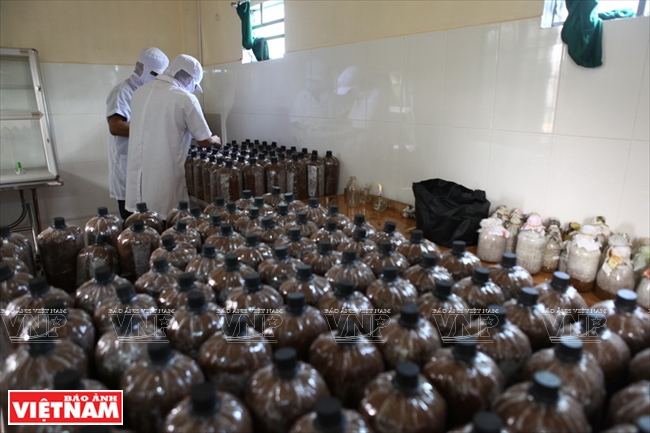
Mushroom growing room.

Inside a pharmaceutical linhzhi mushroom farm of Tran Hong Thuy.
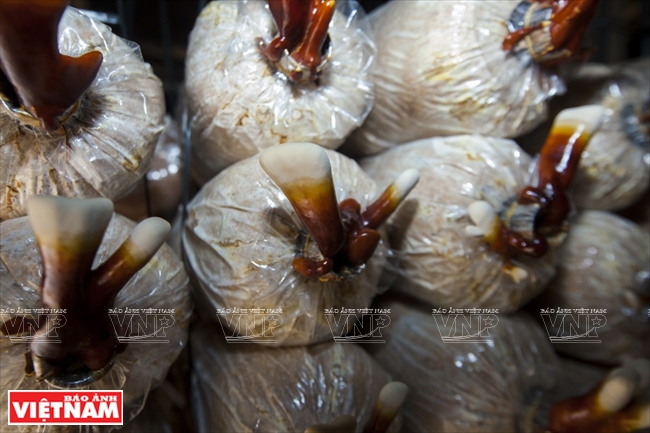
After about 5 months, pharmaceutical linhzhi is harvested.
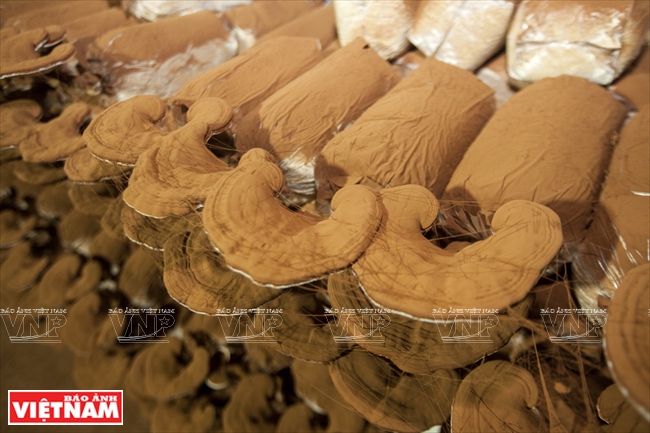
Mushrooms being harvested.
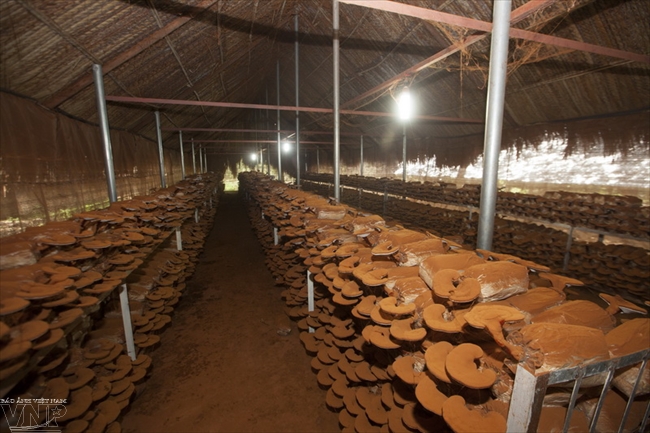
Linhzhi mushroom growing houses must satisfy strict requirements
for good mushroom growth and harmful bacterium prevention.
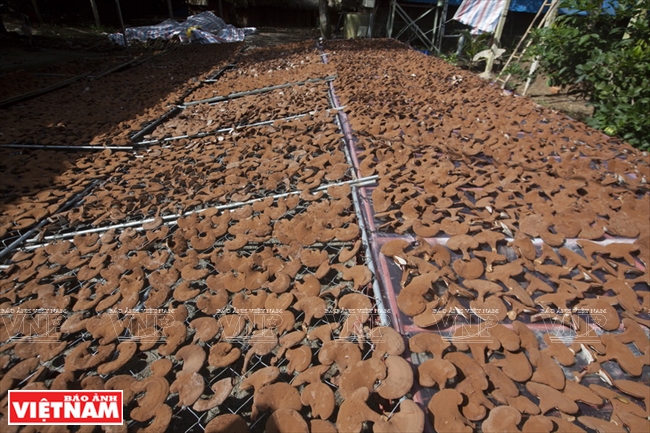
Sun-drying the harvested linhzhi mushroom.
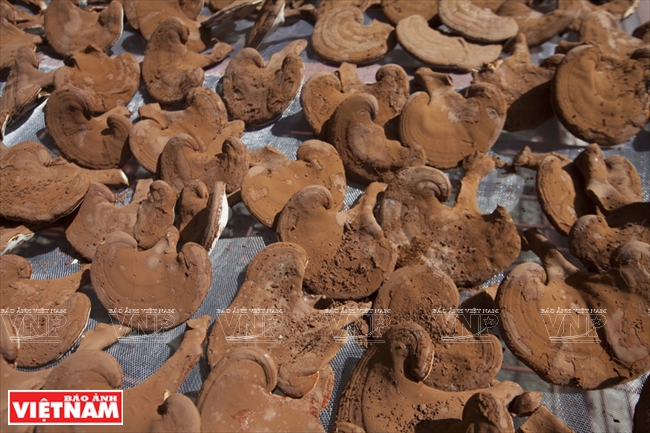
Pharmaceutical linhzhi is good for human health.
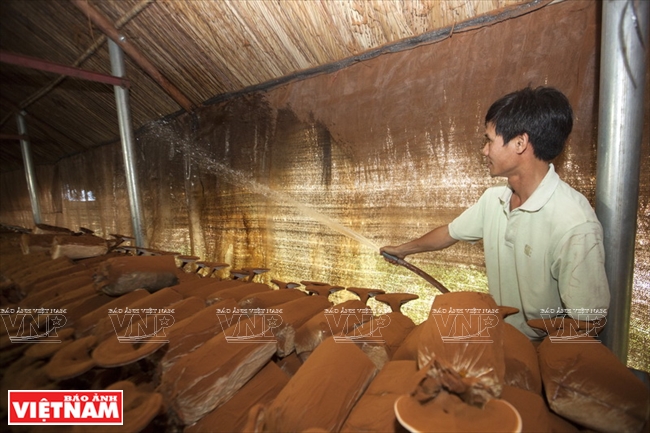
The current pharmaceutical mushroom growing model yields high economic efficiency for peasants in Dong Hoa commune. |
|
Red linhzhi can be harvested once every five months. Harvested mushrooms must be sun-dried or fire-dried at 40- 45oC to be up to the hygienic standards. This kind of pharmaceutical mushroom is effective in resisting cancer, repressing the spread of cancer tissues, regulating the immunity, stabilizing hypertension, lowering cholesterol, detoxicating and strengthening the liver and repressing the release of histamines, and controlling allergies… |
Le Thi Huong owns 12 pharmaceutical mushroom farms, where Japanese and South Korean linhzhi are grown and processed. The post-harvest waste is used for the production of food mushrooms. She also successfully produces red linhzhi and pink linhzhi as well as linhzhi powder, meeting the pharmaceutical market demands. From here, pharmaceutical linhzhi products are distributed to various provinces and cities, including Ho Chi Minh City, Vung Tau and Da Nang.
With the economic efficiency of growing pharmaceutical mushrooms, the Agriculture Promotion Center of Dong Nai Province and Agriculture Promotion Station of Trang Bom District organised a workshop to evaluate the pharmaceutical mushroom growing model in the locality, which was attended by member cadres and farmers from 17 communes and townships in Trang Bom District. According to Nguyen Viet The, head of the Trang Bom Agriculture Promotion Station, the workshop created conditions for the widespread development of pharmaceutical mushroom growing model when people realised that it is not so difficult to apply this model, which does not require large land areas and large investment capital as compared to the growing of other mushrooms.
With the results obtained from these models, Trang Bom Agriculture Promotion Station will organize more training courses and mushroom growing seminars at various mushroom farms of good economic efficiency, high productivity and high quality for farmers so that pharmaceutical mushroom growing brings about higher efficiency and higher and stable incomes for people.
.
Story: Nguyen Vu Thanh Dat - Photos: Thong Hai